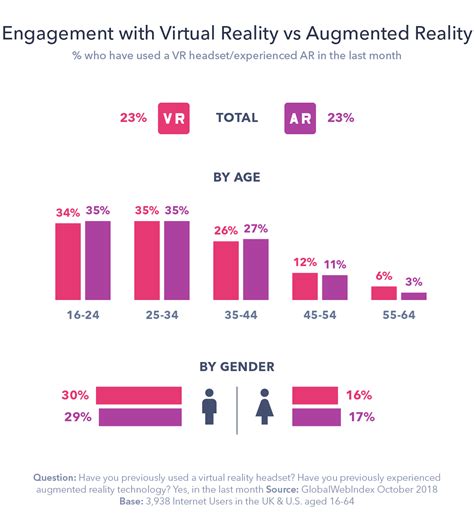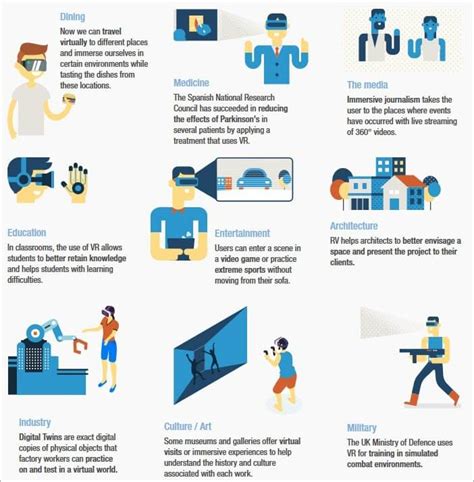Breaking News


Popular News


Discover the advantages, mechanics, and impact of augmented reality gaming in mobile apps. Explore challenges, considerations, and future trends in Augmented Reality (AR) has been revolutionizing the world of mobile gaming in recent years, offering a new level of immersion and interactivity for players. In this blog post, we will delve into the exciting realm of AR gaming, exploring its various facets and discussing its impact on the gaming industry.
The post will kick off with an introduction to AR gaming, providing a comprehensive overview of what it entails and how it differs from traditional gaming experiences. We will then move on to discuss the advantages of integrating AR into mobile apps, highlighting the unique benefits it brings to the table.
Furthermore, we will explore the intricacies of AR gameplay mechanics and the level of interactivity it enables, shedding light on the innovative ways in which players can engage with the virtual world. Additionally, we will delve into the impact of AR on user engagement and retention, showcasing the potential for creating deeply immersive and captivating experiences.
Moreover, we will address the challenges and considerations that developers face in the realm of AR game development, providing valuable insights into the complexities of this burgeoning field. Finally, we will take a glimpse into the future, discussing the potential trends and innovations that await in the world of AR gaming.
Join us on this captivating journey as we unravel the boundless possibilities of augmented reality in mobile gaming.
Contents

Augmented Reality (AR) gaming is an innovative technology that has taken the gaming industry by storm. It seamlessly merges the virtual world with the real world, creating an immersive and interactive gaming experience for players. In AR gaming, digital elements are superimposed onto the real environment using a smartphone or tablet camera. This allows players to interact with the game in a whole new way, as they move and explore their physical surroundings while engaging with virtual characters and objects.
One of the key distinguishing features of AR gaming is its ability to blur the lines between the virtual and physical worlds. Unlike traditional video games, which are confined to a screen, AR games bring digital content into the player’s immediate environment. This creates a sense of presence and interactivity that is truly groundbreaking. With the advancement of AR technology, developers are able to create increasingly sophisticated and realistic AR experiences that captivate and engage players like never before.
Furthermore, AR gaming offers a new level of immersion and interactivity, making it an exciting and promising frontier in the gaming industry. As technology continues to evolve, we can expect to see even more innovative and immersive AR gaming experiences in the future, changing the way we play and experience games on our mobile devices.

Augmented Reality (AR) gaming in mobile apps has revolutionized the way we play and interact with games on our smartphones. One of the advantages of AR gaming is the immersive experience it provides to players. By overlaying digital content onto the real world, AR games create a sense of presence and engagement that traditional mobile games cannot match.
Another key advantage of AR gaming in mobile apps is the potential for physical activity and movement. Unlike typical mobile games that require players to sit still and interact with the screen, AR games encourage users to get up, move around, and explore their surroundings. This added physical component not only makes the gaming experience more dynamic, but also promotes a healthier and more active lifestyle.
Furthermore, AR gaming in mobile apps opens up new opportunities for social interaction and collaboration. Players can engage in multiplayer AR experiences, where they work together to complete tasks, solve puzzles, or compete in real-time challenges. This social aspect of AR gaming enhances the sense of community and connection among players, leading to a more fulfilling and enjoyable gaming experience.
In summary, the advantages of AR gaming in mobile apps include enhanced immersion, physical activity, and social interaction. These unique qualities make AR games a valuable addition to the world of mobile gaming, offering players a more interactive, engaging, and holistic experience.

Augmented Reality (AR) gaming is an exciting and immersive way to experience video games. By superimposing digital elements onto the real world through the use of a smartphone or other AR-enabled device, players can interact with virtual objects and characters in their physical environment. This unique blend of the digital and physical worlds creates a new dimension of gameplay, offering endless possibilities for creativity and innovation.
One of the key elements of AR gaming is its interactive nature. Unlike traditional video games, where players are limited to interacting with a screen, AR games allow for a much more dynamic and engaging experience. Players can physically move around and explore their surroundings, interacting with virtual objects and characters as if they were truly part of the real world. This level of interactivity not only increases the sense of immersion, but also opens up new gameplay mechanics and challenges that are unique to AR.
Furthermore, the mechanics of AR gaming leverage real-world elements to create a more authentic and varied experience. For example, in an AR treasure hunt game, players might have to physically search for and uncover virtual treasures hidden in their surroundings. This type of gameplay mechanic not only encourages physical activity, but also adds an exciting element of discovery and adventure to the gaming experience.
In conclusion, AR gaming introduces a new level of interactivity and gameplay mechanics that are not possible in traditional video games. By blending the digital and physical worlds, AR games create a dynamic and immersive experience that challenges players to interact with and explore their surroundings in creative and exciting ways.

Augmented Reality (AR) has revolutionized the way users engage with mobile gaming platforms. By incorporating AR technology into games, developers have been able to create immersive and interactive experiences that captivate users’ attention and keep them coming back for more. The impact of AR on user engagement and retention is undeniable, as it provides a unique and compelling gaming experience that traditional methods simply cannot replicate.
One of the key advantages of AR in mobile gaming is the interactivity it offers. Users are no longer passive participants in the gaming experience; instead, they are actively engaged in the virtual world, interacting with objects and characters in real time. This high level of interactivity creates a deep sense of immersion, making the gaming experience more captivating and memorable. As a result, users are more likely to stay engaged with AR games for longer periods of time, leading to improved user retention rates.
Furthermore, the social aspect of AR gaming also contributes to enhanced user engagement and retention. With the ability to connect with other players in real time, AR games foster a sense of community and collaboration, further enriching the overall gaming experience. This social aspect not only keeps users engaged with the game itself but also encourages them to return to the game in order to connect with their friends and fellow players.
| Key Advantages of AR in Mobile Gaming | |
|---|---|
| Immersive Interactivity | Social Connectivity |

Developing a successful augmented reality (AR) game comes with its own set of unique challenges and considerations. One of the main challenges in AR game development is the need for advanced technology and hardware. Creating immersive AR experiences requires powerful computing capabilities and high-resolution displays, which can be costly and may limit the accessibility of the game to users with the required devices.
Another consideration in AR game development is the need for accurate spatial mapping and tracking. In order to seamlessly integrate digital objects into the real world, AR games rely on precise tracking of the user’s physical environment. This can be challenging in dynamic or complex environments, such as crowded urban areas or uneven terrain, and may require advanced sensor technology and complex algorithms to achieve reliable tracking.
Furthermore, AR game developers must navigate the ethical and privacy implications of creating interactive experiences that blend the digital and physical worlds. Privacy concerns and potential misuse of AR technology, such as invasive data collection or unintended effects on real-world behavior, present important considerations for developers to address in the design and implementation of their games.
In addition, the diversity of AR-enabled devices and platforms adds another layer of complexity to game development, as developers must consider how to optimize their game for a wide range of hardware specifications and operating systems. Ensuring a consistent and enjoyable experience across different devices can be a significant challenge, requiring careful consideration of performance optimization, compatibility testing, and user interface design.

As technology continues to advance, the future of augmented reality (AR) gaming holds many exciting possibilities. One of the most important trends in AR gaming is the integration of artificial intelligence (AI) to create more immersive and realistic experiences for players. AI can be used to dynamically adapt game environments and challenges based on player behavior, creating personalized and dynamic gameplay experiences.
Another promising innovation in AR gaming is the development of wearable AR devices that provide a more seamless and immersive gaming experience. These devices, such as AR glasses or contact lenses, can overlay digital elements onto the real world without the need for holding a separate device, making AR gaming even more accessible and convenient for players.
Furthermore, the future of AR gaming also includes advancements in haptic feedback technology, which can provide more realistic tactile sensations to enhance the gaming experience. With the integration of haptic feedback, players can feel a greater sense of immersion and interaction with the virtual world, further blurring the lines between reality and the digital realm.
In conclusion, the future of AR gaming is marked by exciting trends and innovations, including the integration of AI, wearable AR devices, and haptic feedback technology. These advancements hold the potential to revolutionize the way we experience gaming, providing more immersive, personalized, and interactive experiences for players.

What is augmented reality (AR)?
Augmented reality (AR) is a technology that overlays digital information and virtual objects onto the real world through a device such as a smartphone or tablet, enhancing the user’s perception of reality.
How is augmented reality used in mobile gaming?
In mobile gaming, augmented reality is used to integrate virtual game elements, such as characters or objects, into the player’s physical environment, creating an immersive and interactive gaming experience.
What are some popular augmented reality mobile games?
Some popular augmented reality mobile games include Pokemon Go, Harry Potter: Wizards Unite, and Ingress Prime, which all use AR technology to engage players in real-world environments.
What are the benefits of augmented reality in mobile gaming?
Augmented reality in mobile gaming offers players a more interactive and engaging gameplay experience, as well as the opportunity to connect with other players in real-world locations. It also encourages physical activity and exploration.
Are there any challenges associated with augmented reality in mobile gaming?
Challenges related to augmented reality in mobile gaming include technical limitations, such as device compatibility and environmental factors, as well as concerns about privacy and safety when interacting with the real world while playing games.
How is augmented reality technology advancing in the mobile gaming industry?
Advancements in augmented reality technology for mobile gaming include improved graphics and visual rendering, more precise location tracking, and the integration of augmented reality features into a wider variety of game genres and styles.
What does the future hold for augmented reality in mobile gaming?
The future of augmented reality in mobile gaming looks promising, with potential for more sophisticated and immersive AR experiences, as well as increased integration of AR technology with other emerging technologies such as virtual reality and artificial intelligence.